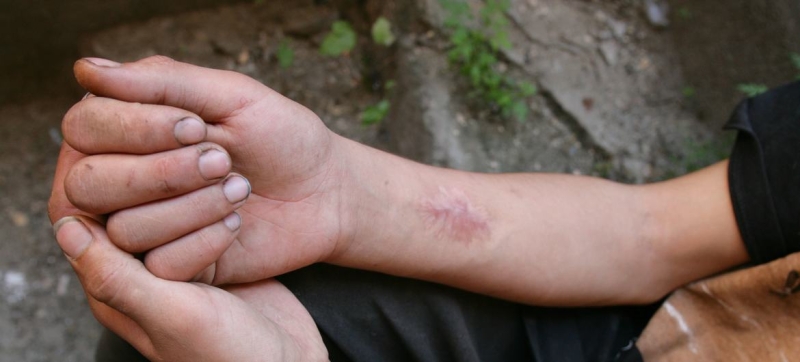
In Eastern Europe and Central Asia, only 52 percent of people who inject drugs receive HIV prevention services. 93 percent of new HIV cases in Eastern Europe and Central Asia are in Russia, Ukraine, Uzbekistan and Kazakhstan Health
Only half of the 2.1 million people living with HIV in Eastern Europe and Central Asia have access to treatment, and only 42 percent of people living with HIV in the region are virally suppressed , which is the lowest in the world. These data are carried out in the latest report of the Joint United Nations Program on HIV/AIDS (UNAIDS).
A Promise Not Kept
According to the latest data, 140,000 new HIV cases were registered in the region in 2023, with 93 percent of these cases occurring in Russia, Ukraine, Uzbekistan and Kazakhstan. Eight of the 13 countries in the region are reporting rising numbers of new infections.
“The promise of ending AIDS in Eastern Europe and Central Asia is not being delivered,” said Winnie Byanyima, Executive Director of UNAIDS. Because stigma, discrimination and harmful punitive laws prevent marginalized communities from accessing vital services, 94 percent of new infections occur among people from specific populations, including men who have sex with men, people who inject drugs, and sex workers. business, as well as sexual partners of people from these population groups.
“People go underground”
Only 58 percent of sex workers, 43 percent of gay men, 52 percent of people who inject drugs, and 65 percent of transgender people receive HIV prevention services. Only 12 percent of resources are allocated to prevention programs among key populations.
Criminalization of possession of small amounts of drugs for personal use and criminalization of sex work drives people most in need underground and loses access to HIV services. All 16 countries in the region criminalize sex work, 13 of these countries have penalties for “concealing HIV status,” “exposing oneself to the risk of infection,” or transmitting HIV, and in seven countries you can be jailed for possessing small amounts of the drug for personal use .
Research shows that criminalization increases HIV prevalence among key populations. Unless countries can ensure unimpeded access to HIV prevention services for all, new infections will continue to rise.
Criminalization and stigma
“Restrictive legal environments and stigma are hindering progress in the region,” says Eamonn Murphy, UNAIDS Regional Director for Eastern Europe, Central Asia and Asia and the Pacific. – Restrictive laws, stigma, and aggressive policing drive people away from medical care. If people are driven underground, the response to HIV will not succeed.”
Reliable prevention technologies such as pre-exposure prophylaxis remain poorly available for the same reason. Criminalization fuels stigma, and many people avoid health care due to discrimination. Nearly half of people who inject drugs surveyed in Kyrgyzstan and 32 percent of people living with HIV in Tajikistan reported avoiding health care due to stigma and discrimination. UNAIDS data shows that people from key groups are regularly exposed to violence.
Shrinking civic space
“Supporting community leadership is essential to reaching marginalized populations with life-saving services. Without community leadership and without integrating the services they provide into the health system, it will be too difficult to reach these groups,” says Elena Rastokina, head of the Answer Public Foundation, Kazakhstan.
Shrinking civic space and attacks on human rights are jeopardizing our response to the HIV epidemic
Recent years have raised concerns Limiting civic space and reducing community engagement in public health initiatives, including harm reduction programs, and access to health services for LGBTQ+ people, sex workers and other marginalized populations. Restrictive measures at local, national and regional levels are limiting community engagement with the public health system.
Ganna Dovbakh, Executive Director of the Eurasian Harm Reduction Association, emphasizes: “The reduction of civic space and attacks on human rights threaten our response to the HIV epidemic, which is based on the provision of services through communities or civil society. Solving these interrelated problems is necessary for a sustainable response to the AIDS epidemic in our region.”
Ukraine continues to fight HIV
The war in Ukraine is also damaging the region’s HIV response. But despite this conflict, Ukraine remains committed to its response to HIV. A strong coalition of government, civil society, international organizations and donors has enabled the continuation of HIV services, including treatment for 143,600 people in 2023. This collaboration continued the supply of life-saving antiretroviral, anti-tuberculosis and opioid agonist drugs, avoiding interruptions in HIV treatment and other services. As of January 2024, 7,900 Ukrainian refugees in other countries and 1,900 who returned to Ukraine were receiving antiretroviral therapy.
Many community organizations working in the area of HIV in Ukraine have refocused their activities on addressing humanitarian issues and supporting community members, while continuing to advocate at the national level for access to HIV services and protection of people’s rights.
Thus, the public organization ALLIANCE.GLOBAL, with the support of UNAIDS and other donors, oversees a network of five specialized shelters throughout the country, providing shelter, humanitarian assistance and access to specialized services, including the prevention and treatment of HIV infection, for key populations and LGBTQ+ displaced people.
Despite the war, ALLIANCE.GLOBAL, along with other community-led organizations, continues to advocate for legislation , protecting LGBTQ+ people from intolerance and hate crimes, and expanding access to health services, including for HIV.
Looking to the Future
UNAIDS experts call on leaders in the region to develop sustainable HIV plans to 2030 and beyond. These plans should include creating an enabling legal environment, supporting community-led responses to HIV, and increasing domestic funding. Repealing laws and regulations that prevent people from accessing services will be critical.
As Murphy stated: “Ensuring access to services and treatment for all is the way to end with AIDS.”
